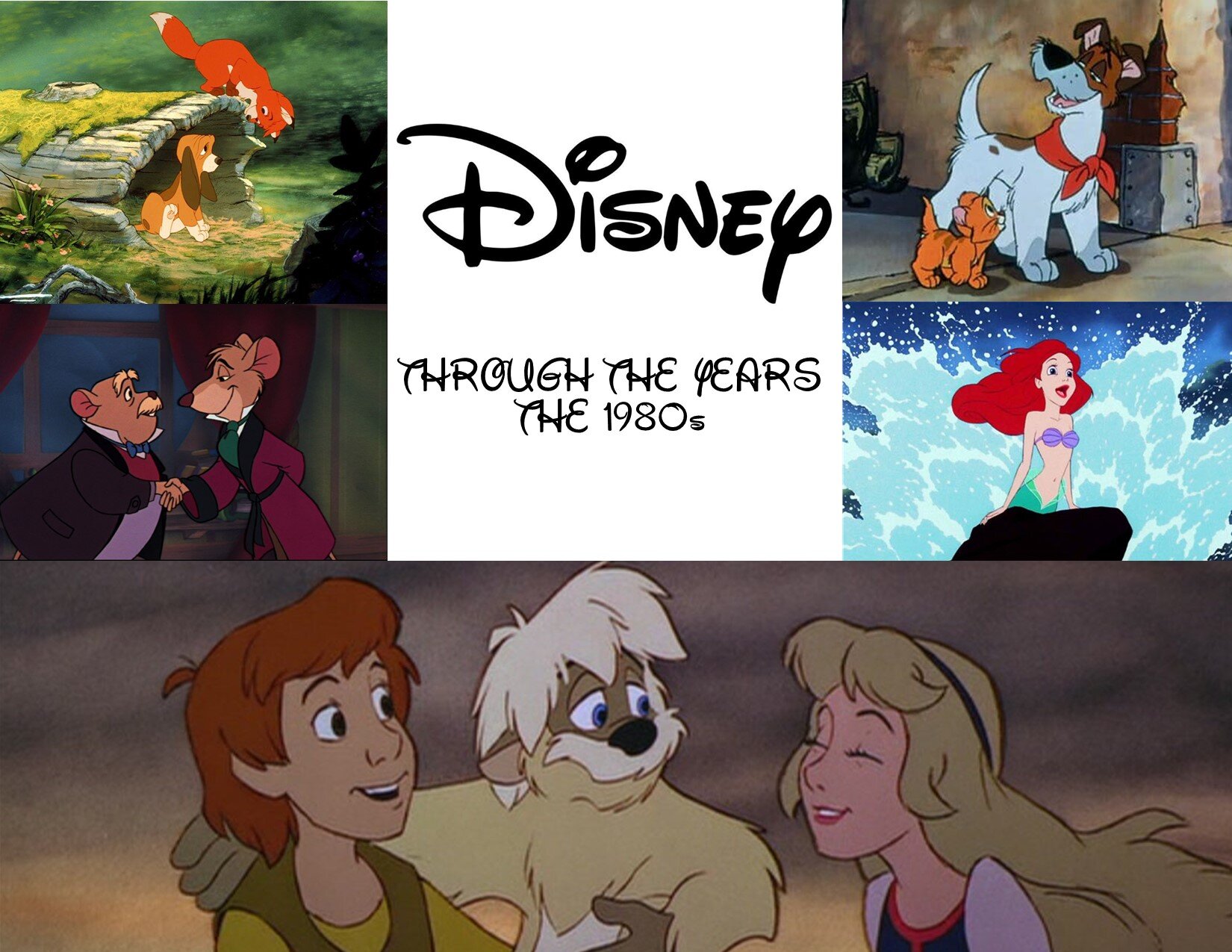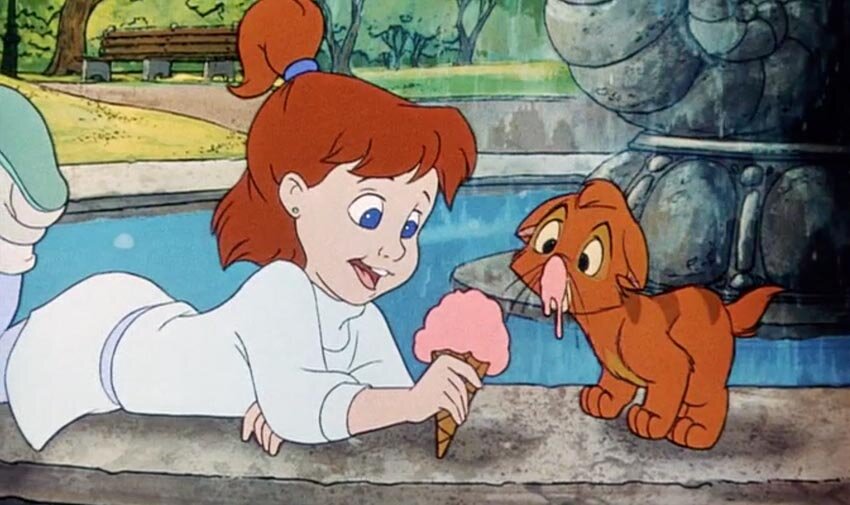Disney Through the Years - The 1980s: The Animated Features
Every month this year I am going decade-by-decade through the history of Walt Disney Company’s feature films. I will review each film from Walt Disney Animation Studios and rank them. I’m doing an additional feature in the series that focuses on every live action film by Walt Disney Pictures. So, there are two features each month. This piece’s focus is on the animated movies of the 1980s.
For more details on what is and isn’t included in this series be sure to check out the first entry that introduces the series.
In this entry, I’ll be reviewing the five animated movies Disney produced in the 1980s that are available on Disney+. Now, Disney+ removed the Disney Through the Years collection from the Search tab. But you can still follow along in the Animated Collection menu from the Search tab.
The Fox and the Hound (1981)
The friendship between a fox and a hound is tested by their natural instincts and social expectations.
This film was delayed from a Christmas 1980 release to the following summer due to a lot of turbulence behind the scenes with the animators. Don Bluth and several other animators left the studio after disagreements with producer Wolfgang Reitherman. This was the last film to have any involvement with the Nine Old Men, legendary animators of the studio who worked with Walt through their original Golden Age. At this point there was a new era of creators emerging that included John Lasseter and Tim Burton and the two generations clashed.
That discord behind the scenes really shows in this film. The Fox and the Hound never really works or achieves the power and strength it aims for. One major point of contention revolves around when a supporting character gets hit by a train. As it was originally written and animated by the younger team that character was supposed to die, thereby creating a strong emotional motivator for Copper, the hound dog. Co-director Art Stevens rejected the death and edited the animation of that scene to show that character’s eyes open and close so the audience knows he’s still alive. Afterwards, we see the dog limping around in a leg cast. Well, the younger team was right: the scene and the ones that follow absolutely don’t work without that character’s death.
The film has other issues. There are a couple of songs that are rather forgettable and their scenes would be stronger if the characters were allowed to express themselves without the music. Also, Copper’s master, Amos, is positioned as a villain in that he wants to kill a fox (Tod) he thinks is terrorizing his property. However, outside of one scene in The Rescuers with Medusa, Amos is the first major character to use a gun. And Amos is reckless with his shotgun, as, in one scene when the fox hops into his owner’s truck, Amos is aiming his shotgun in the direction of the owner driving the vehicle. It’s a rather uncomfortable leap for the character to make. Even though his intention is to shoot the fox, the old lady driving is likely to be collateral damage. On top of that Amos is rather casually sexist towards the old lady throughout the film.
Lastly, without going into too much detail, the film is about a friendship torn by prejudice - or is at least a metaphor for defying social prejudices - and yet, the ending is not exactly the heartwarming conclusion one might expect. There is an actual visual divide between the characters that makes for a melancholic note that accepts the friendship was meant to whither.
Overall, The Fox and the Hound is far from a breath of fresh air after 4 years since the release of The Rescuers. It’s problematic and riddled with production issues that affect the story’s power.
The Black Cauldron (1985)
The wicked Horned King hopes to secure an ancient magical cauldron that will allow him to conquer the world. It’s up to a pig keeper, a princess, a musician, and a furry creature to stop him.
This film adapts the first two books of a five-part fantasy series. It’s a very odd departure for the studio that notoriously epitomized its dark period. I’m not familiar with the source material, but there are two comic relief characters, one on the side of good, the other on the side of evil. Both feel tonally disconnected from the overall story. This is a film that is devoid of joy and magic. Any humor within it feels forced, as though the studio felt like they couldn’t tell a straight-forward fantasy narrative without it. The overall feeling of the film is less “Disney” and more like its eventual competitors Universal or Warner Bros Animation - both of which were typically inferior to what Disney Animation Studios produced.
There is some fascinating animation in The Black Cauldron, but it is very dark and disturbing imagery compared to Disney’s usual fare and is what earned the film a PG rating at the time. The Horned King, while not exactly the most well-rounded of Disney villains, has an unforgettable and effective character design; one of the best in the studio’s history.
It’s also worth noting the first third of the film feels very derivative of Lord of the Rings with an object that an evil force is trying to obtain in order to rule and a supporting character who speaks in an unusual childlike manner (Gurgi = furry Smeagol). And the score is composed by Elmer Bernstein, whose work for Ghostbusters came out the previous year. The score for The Black Cauldron feels like excerpts of the Ghostbusters score cobbled together with other elements. It is very odd and unintentionally amusing.
The Black Cauldron - or The Chronicles of Prydain, the book series that inspired the film - is ripe for a sincere and faithful live action remake. Production restrictions in the late ‘70s and ‘80s was quite limiting to the possibilities of live action fantasy at the time, so it’s understandable why Disney would take a crack at the story in animated form. However, the result was a film that apparently composited characters and truncated story into something that wasn’t the worst the studio had ever produced, but certainly could never be counted among its best.
The Great Mouse Detective (1986)
Professor Ratigan kidnaps the girl of a toymaker in order to force the toymaker to build a clockwork robot in the likeness of the Queen of the Mice so Ratigan can take over and rule England. It’s up to detective Basil and his team to stop Ratigan.
The Great Mouse Detective is definitely a jump forward from Disney’s handful of previous films. In terms of quality, it is the first film to be on par with 1973’s Robin Hood, but not as lively or fun. It would be a little while longer before the joy and spark Disney Animated Studios is known for would return. The Great Mouse Detective still has the spectre of the dark period hanging over it with murky settings and dull, inky colors.
There are a handful of merits to note about The Great Mouse Detective. Chief among them is the villain Professor Ratigan, voiced by Vincent Price. Not since 1967’s The Jungle Book have we seen a villain who balances a personality with a sinister presence. Ratigan is the best-written Disney villain in a long time, as he has a tremendous screen presence, but also a very clear plan and conflict with the protagonist, Basil. He is also the first villain since Mad Madam Mim from 1963’s Sword in the Stone to have his own song (‘The World’s Greatest Criminal Mind’). At this point, the villain song was not part of the Disney formula, as most villains did not have a song in Disney canon and only a couple of supporting villains (Honest John in Pinocchio, the Siamese cats in Lady & The Tramp) had their own songs.
It’s also worth noting that The Horned King in The Black Cauldron is the first villain since Maleficent in 1959’s Sleeping Beauty to actually die in front of the viewer. But with Ratigan, we are given the death of a non-fairy tale villain for the first time. Ratigan and the characters of The Great Mouse Detective are proposed to live in a real world setting (Victorian London). So, his death is much more affecting than the handful of villains in Disney’s past (The Evil Queen, Maleficent, The Horned King) who met their demise. Villain deaths would also become more frequent after The Great Mouse Detective.
The last merit of note is the animal sidekick Toby. The animal sidekick would also become part of the Disney formula, but it really wasn’t a thing until The Great Mouse Detective (unless you count Gurgi from The Black Cauldron). Cinderella, with its group of mice, and Pinocchio, with Jiminy Cricket, were the exception of having animal sidekicks consistently present in the protagonist’s story. The animal sidekick would become a comic relief staple in the coming years.
The only issues with The Great Mouse Detective is it can’t decide if it wants to be a musical or a thriller. Since there’s really only one musical number (‘Let Me Be Good to You’ is a stage performance and ‘Goodbye So Soon’ is a recording) the film leans more towards a straight-forward thriller. While ‘The World’s Greatest Criminal Mind’ is a solid villain song, the overall feel of the film would be more consistent without it. Also, Miss Kitty Mouse feels like she’s supposed to be an important character when she’s introduced, but she ends up providing nothing to the story and is ultimately a waste of time.
That said, it is clear the quality of the Disney animated movies were improving with each outing, leading us back to the greatness the studio was capable of 20 years before. With The Great Mouse Detective, they weren’t quite there yet - but they would be soon.
Oliver & Company (1988)
Based on Charles Dickens’ Oliver Twist, a homeless cat befriends a group of street dogs before being taken in by a wealthy little girl in New York City.
This film is interesting for a number of reasons. Its animation style is often criticized, but is no different from that of One Hundred and One Dalmations or The Rescuers with a sketchy pencil line look. It helps make clear in context how huge a step forward the next feature would be, but it is no worse than Disney’s recent pictures.
This is the studio’s first true animated musical since 1970’s The Aristocats in that the songs are not necessarily performative, rather part of the narrative or character development. And, as such, it’s clear the studio decided to take a turn towards the traditional musical even though the music composed for the film is contemporary pop. In Oliver & Company there are musical numbers with random characters in the environment joining in the choreography. This gives the film an energy and liveliness Disney’s films have lacked since 1967’s The Jungle Book. It is, perhaps, the studio’s best songbook since that film with songs performed by Huey Lewis, Billy Joel, Bette Midler, and one of the Pointer Sisters.
The voice cast certainly brings a lot to the table here. Dom DeLuise as the street urchin Fagin, Robert Loggia as the loan shark Sykes, Bette Midler as the spoiled poodle Georgette, Cheech Marin as the scrappy chihuahua Tito, and Roscoe Lee Browne as the snooty bulldog Francis go a long way in bringing each character a personality. One criticism one could make is without these talented actors the characters are flat and uninteresting. This is particularly true in the case of Sykes, a broad-shouldered, cigar-smoking man in a suit. While his story as a villain makes more sense than Edgar’s in The Aristocats, without Robert Loggia’s voice he would be just as forgettable. Loggia makes that character. However, he’s still one white man in a series of white male villains in Disney canon (Edgar in The Aristocats, Percival McLeach in The Rescuers Down Under, Ratcliffe in Pocahontas, etc.).
While far from a bar-raising triumph, Oliver & Company moved the needle a little further towards where the animation studio needed to go to regain its former glory. Oliver & Company is largely a forgotten film in the studio’s history, but it is certainly worthy of rediscovery, despite any flaws it may have.
The Little Mermaid (1989)
A teenage mermaid princess infatuated with the surface world is seduced by a sea witch into a scheme to give her a life in that world at the cost of her voice - and possibly her father’s kingdom.
The production behind this film was massive, involving several different animation departments across the country. It was also the last Disney film to use traditional hand-painted cels. Models were brought in for the first time in decades for motion reference material, including hair movement in water. The end result of this years-long effort was leaps and bounds above everything that had come before for decades. Not since 1959’s Sleeping Beauty had the studio’s animation work been nearly as exquisite as that of The Little Mermaid. The colors are vibrant, the little facial gestures create more range and life to each character than ever before.
The move to a traditional musical structure in Oliver & Company paid off tenfold in The Little Mermaid. Howard Ashman and Alan Menken created the studio’s best songbook since 1967’s The Jungle Book - and could be argued to be superior. The vocal performances definitely contribute to the bar being raised ever so out of reach of any other animated studio at the time. Jodie Benson’s performance as Ariel singing ‘Part of Your World’ is an extraordinary one. We’ve heard I Want songs before like ‘I’m Wishing’ in Snow White, ‘A Dream is a Wish Your Heart Makes’ in Cinderella, and ‘Once Upon a Dream’ in Sleeping Beauty. We hadn’t heard an I Wish song since. But ‘Part of Your World’ is flowing with a passion that is more stirring than any Disney song that came before.
Let’s also talk about the villain song, ‘Poor Unfortunate Souls’. At this point there were only two other Disney villains to have their own song (Madam Mim and Professor Ratigan). Pat Carroll’s Ursula made the villain song a necessary part of the formula for most future Disney animated movies. And it is certainly still one of the three best villain songs in the studio’s history. That is due in large part to Carroll’s performance. She camps and vamps it up here, making ‘Poor Unfortunate Souls’ a real show-stopper. The other elements - the character animation, Ashman’s lyrics - all come together perfectly here.
The rest of the cast: Buddy Hackett (The Love Bug) as Skuttle, the recently-passed Samuel E. Wright as Sebastian, Rene Auberjonois as Chef Louis all bring a liveliness and dimension that even Oliver & Company lacked.
Overall, it is clear, after watching the studio’s films in context, why The Little Mermaid is credited for kicking off a Renaissance that would run for at least the next five years with nearly annual releases during that time that became instant classics. It gave the studio a much-needed life support and direction that the studio really didn’t have after Walt Disney’s passing. In terms of animation, vocal performances, and songbook, The Little Mermaid was arguably the best film in the studio’s history.
The Ranking
The Little Mermaid
Oliver & Company
The Great Mouse Detective
The Black Cauldron
The Fox and the Hound
What are your thoughts?
How would you rank the decade’s animated movies? Which is your favorite?
Keep an eye out for the second feature of The 1980s: Live Action Features! That’ll be a nice reprieve after the ‘70s as there were only a handful by Walt Disney Pictures. But it certainly got a lot more complicated. Be sure to check it out to find out why. And then, next month, we go back to the animated movies with The 1990s: Animated Features.






